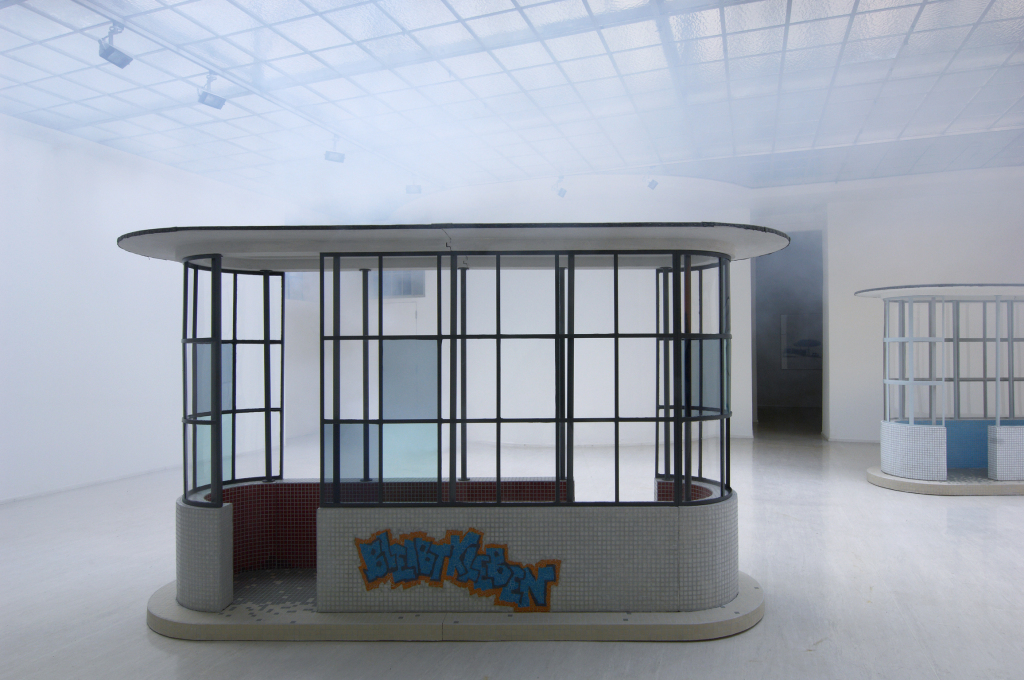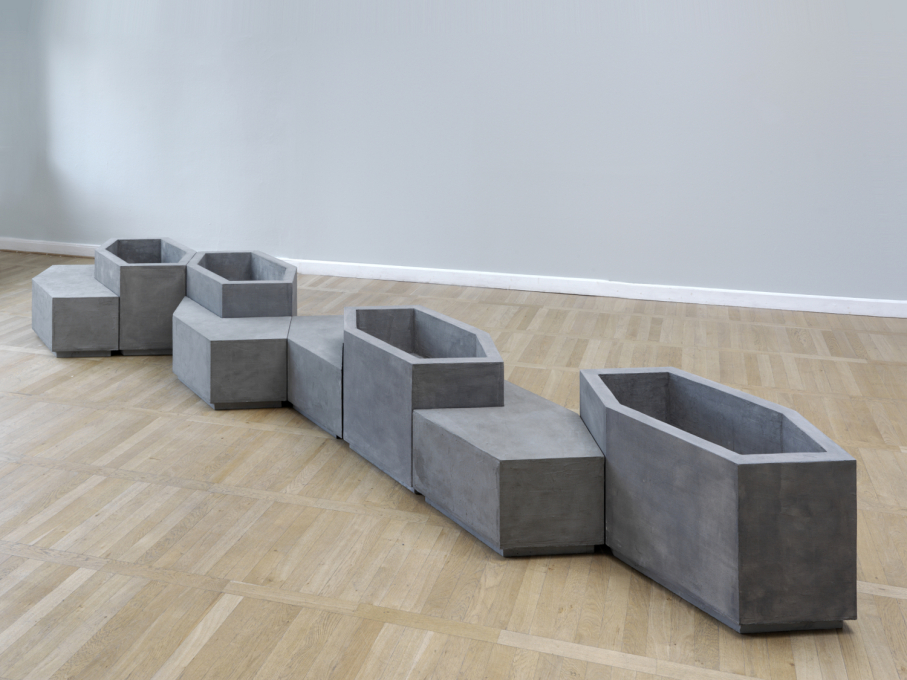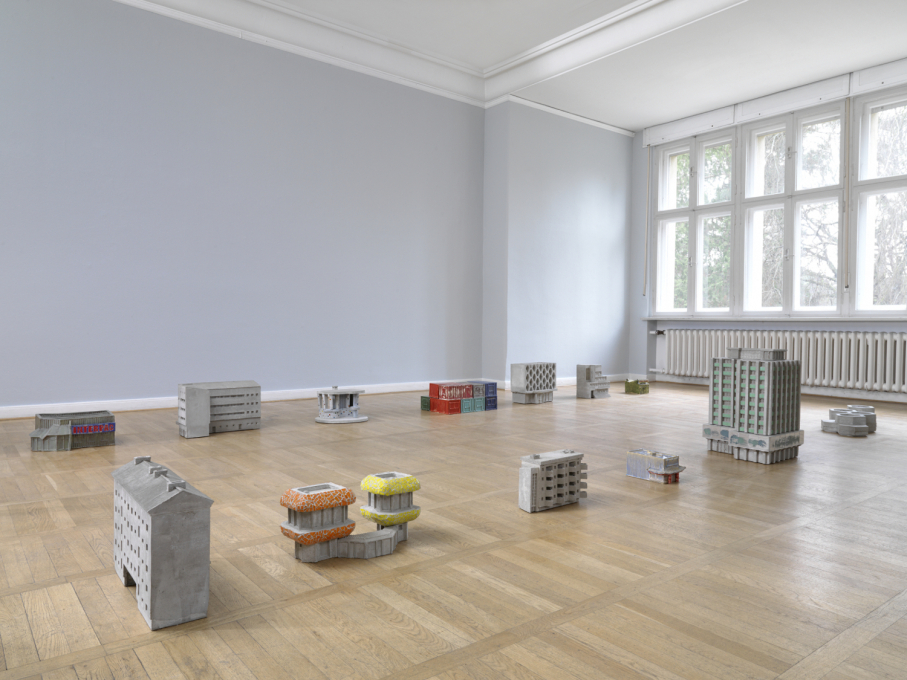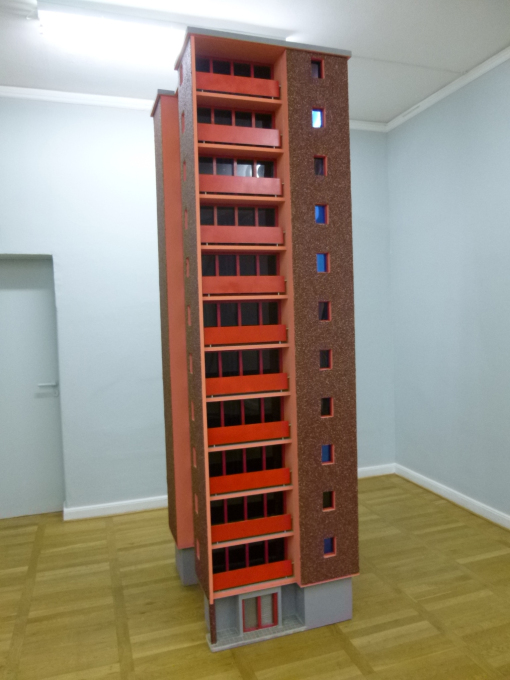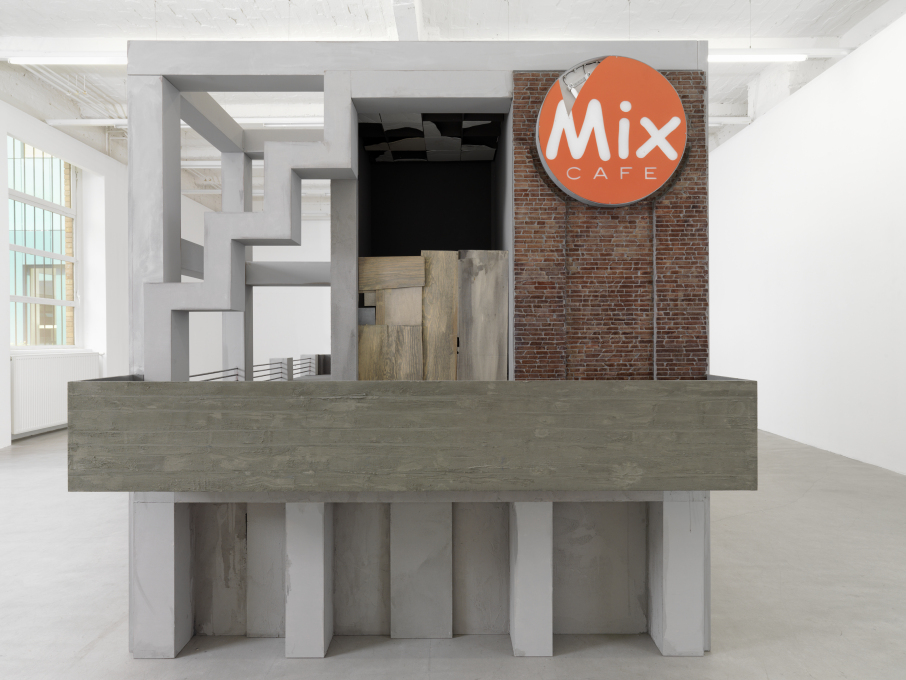“Do not sit on the art!” is something you don’t hear very often at contemporary art shows, making Ina Weber’s new solo exhibition Architectures, Memories, Utopias at Berlin's Haus Am Waldsee an exception. The confusion of some attendees (at least three on Sunday afternoon) is understandable: Weber makes sly, playful sculptures that mimic the ordinary objects and mundane buildings of the modern city. Consequently the red bench, one of a cluster of objects that make up the show’s first work Fußgängerzone ("Pedestrian Zone"), could easily be mistaken for, well – a red bench. Upon a closer look the artifice becomes apparent, but the object-imitations hew close enough to the originals to provoke our normal reactions to such objects, confounding in their similarity.
Weber is adroit in small acts of deception (a skill she might have picked up from the Martin Kippenberger, who taught her at the Hochschule für bildende Künste in Kassel). In one room of the exhibition, 13 small sculptures of ceramic and concrete depict unassuming buildings in Berlin and beyond: a Chinese restaurant, a department store, a Mietskaserne, a post-war apartment block. Sitting in two rows directly on the floor, at the mercy of wandering toddlers, the diminutive models cut a sharp contrast to the oversized and ungainly sculptures on display elsewhere in the show. These distortions of scale and proportion in Weber’s work are disconcerting. Something is off here, but what exactly, is hard to say.
In this atmosphere of suspicion, the artist’s preoccupation with post-war modernism feels like something of a critique. Hochhaus (rot), a three-meter-tall mock-up of an apartment tower, stands alone on a broad swath of gallery floor, evoking the common sense of alienation associated with modernist housing blocks. And Mix Café, a large cubic sculpture whose miniature walls, windows, and railings collectively suggest an architectural model, alludes to something amiss at the very foundations of the modernist project. Its various building elements, plainly evoking a scruffy, no-frills commercial architecture, don't fit together into any meaningful whole. No discernable floor plan orders the spaces, the windows occupy seemingly arbitrary positions, and, strangest of all, the sole point of entry into the structure is a metal hatch near the roof. As an architectural model, the work is senseless, explaining nothing of the building it purports to represent. That this paradox is cast in the materials and forms of the twentieth-century indicts modernism itself as the source of this senselessness and banality.
The artist shows far more cheer in a series of large-scale watercolors that are displayed on the upper floor of the building. Rendered with extreme care, these paintings depict old rickshaws and bicycles, piled high with boxes and trash bags – all bound together by tangled lattices of twine and wire. These slipshod constructions couldn’t be further from the staid buildings portrayed downstairs, and it seems clear which design ethos impresses the artist more. In the long shadow of modernism, Weber celebrates a private form of architecture – messy but practical, and rooted in the everyday.
Jesse Coburn, Berlin
Architectures, Memories, Utopias
18 January – 1 April, 2013
Haus Am Waldsee
Argentinische Allee 30
D-14163 Berlin




